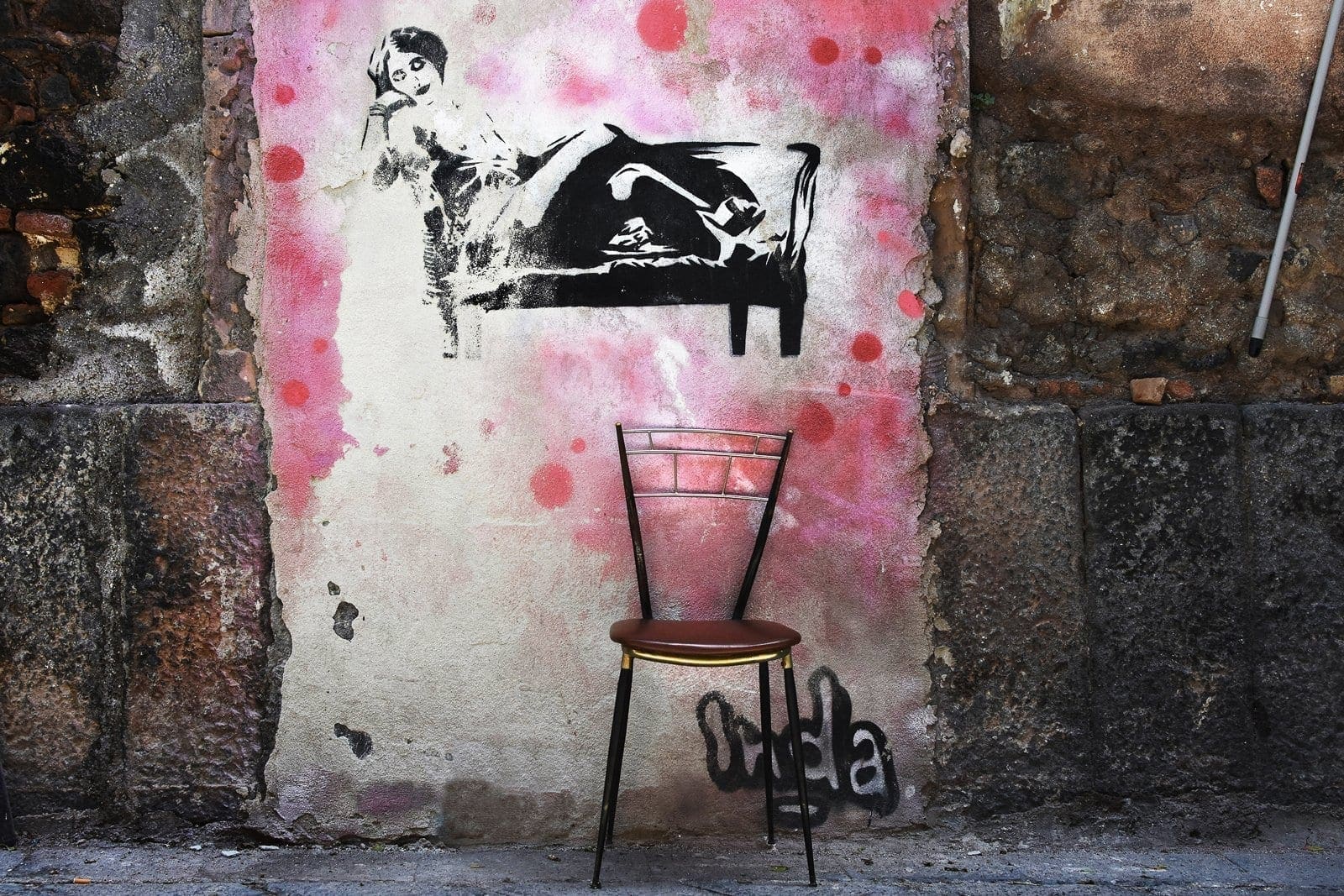«I am from Catania, but I started to know and frequent San Berillo in the 1980s, when I was 23» Franchina, a 60-year-old transgender woman and a prostitute for 44 years, tells me. «I felt completely at ease in those narrow streets and pavements that could barely accommodate a foot 41» she continues. «I married San Berillo; here is where I spent most of my life, to build with sacrifice and resignation a future without certainties», she adds. «If this neighbourhood were a state, it would be anarchic; if it had a flag, it would undoubtedly be a rainbow; if it were a factory, it would churn out sins; if it were a house, it would have four doors, if it were a neighbourhood… this is San Berillo».
In the heart of Baroque Catania lies what was once considered the largest red-light district in the Mediterranean: San Berillo. A carcass quarter, yet profoundly romantic. A dying body kept alive by the last, the least significant: prostitutes, transvestites, ‘puppi’. Those who have never abandoned it and never will: the Belle of San Berillo.
A carcass neighbourhood
Until the mid-20th century, some 30,000 people lived here, including artisans, shopkeepers and prostitutes. Then, in 1957, the district was completely gutted, and the doors of its houses were walled up in anticipation of an urban redevelopment that never took place. Today, the district appears as a body alien to the city, although inextricably linked to it. Its boundaries are well-defined. Crumbling houses, narrow streets and the smell of ‘piss’ separate it from the rest of the centre. But the lava stone and the rubble’s dark colours link with the surrounding city. Its alleys are like wounds that show living flesh. And where they end, the destiny of those who go to seek relief begins or ends.
It is a tricky territory this one of San Berillo, where everything is extreme, and homologation does not exist. Yet from the first time I set foot there, I felt I would not be the only one. I was confronted with a microcosm of the most disparate stories, feelings and experiences. What is immediately noticeable is the deep connection that the Belle have with this neighbourhood.
The degradation here is glaring. The houses are dilapidated, without water and electricity, the walls peeling and without plaster, with mirrors hanging everywhere. The bedrooms with mattresses at the edge of wear and tear, with only a sheet and yellowed pillows on top. In some rooms, a carpet can be found on the floor, hiding the floor without tiles. Small tables and old chests of drawers to rest make-up and work ‘tools’. Worn-out candles and old basins for washing clients or for use as toilets. This is the decor of almost every Belle’s home.

A microcosm of stories
Despite such disheartening conditions, although people no longer earn as much as they used to, the Belle have never wanted to leave the neighbourhood. They have seen these houses grow old with them. Within these walls, they have built bonds of friendship and love. They have hidden their weaknesses, anguish, and fear. Yet, they have often felt lonely here, a loneliness «that makes you angry», explains Cioccolatina, transgender from Catania and in San Berillo for 30 years. «I’m not bad; they make you that way», she says, «the people on the city streets who look at you with prejudice, as an outcast of society, are the same ones who come here looking for you secretly. It is the same one that makes you feel lonely, angry, cynical, but it is also the same one that wants to appease its loneliness with us» she concludes.
And then there are also those who, like Rosaria, a woman from Campania who fled domestic violence, arrived in San Berillo in 1983 and never left. «I was only 17, with two children and a partner who beat me every day, forcing me into prostitution», she says, «I managed to escape thanks to a friend of mine, coming here with my children. I didn’t know how to feed them. In San Berillo there were many meeting houses; I had already been a prostitute, and I started working for one of them. I have been through a lot in all these years, but nothing compares to what I experienced with that man. It sounds absurd here, but I feel at home; I feel I have a place in this world. I don’t live in this neighbourhood; I work here, yet when I feel lonely, I come here because I know I will find someone willing to listen to me».
The chair and mirrors in San Berillo
It is clear that the houses never closed for Franchina, Cioccolatina, Rosaria, and all the other Belle of San Berillo. Each of them, for years now, has spent their days sitting in a chair beside their own life, waiting to see or be seen, to give or receive. If the chair is empty, the wait is over.
Just cross the threshold and look at yourself in the mirror, one of the many present, and see how you dress and strip yourself of dreams and fears. Of desolation and joy. Of transgression and prayer. Of envy and compassion. Of deception and truth. To lose and recognise oneself, to discover a fleeting beauty and an eternal being instead. The mirrors of San Berillo show a man or woman, who tells his or her story without filters or hypocrisy but with the dignity of someone who feels himself or herself, demonstrating that it is not gender that counts, but humanity.
Each of their wrinkles, as well as each crack in their homes, delicately recounts a multitude of loneliness, of lives waited for and unfulfilled, evoking an eros that is for some deviant but, ultimately, desperately vital.
Award
- 19th Ariosto Portfolio 2020, Garfagnana (Lu) | 2nd place
- Portfolio Italy 2020 Prize | Finalist
- Moskow Intern. Foto Award 2021 | Bronze Awarded Editorial Photo-Essay

